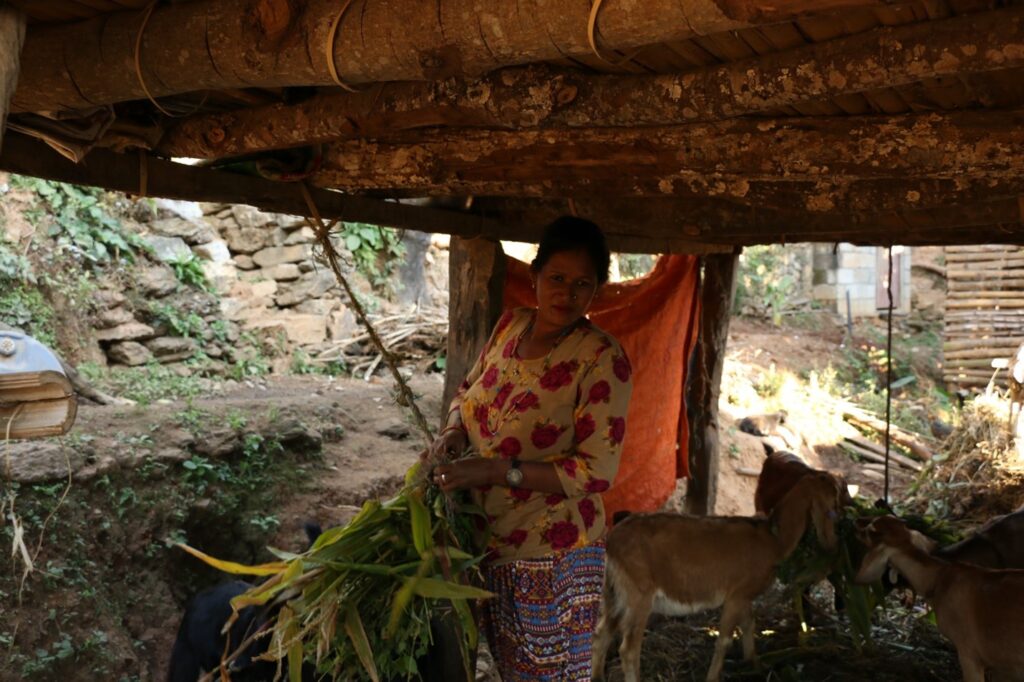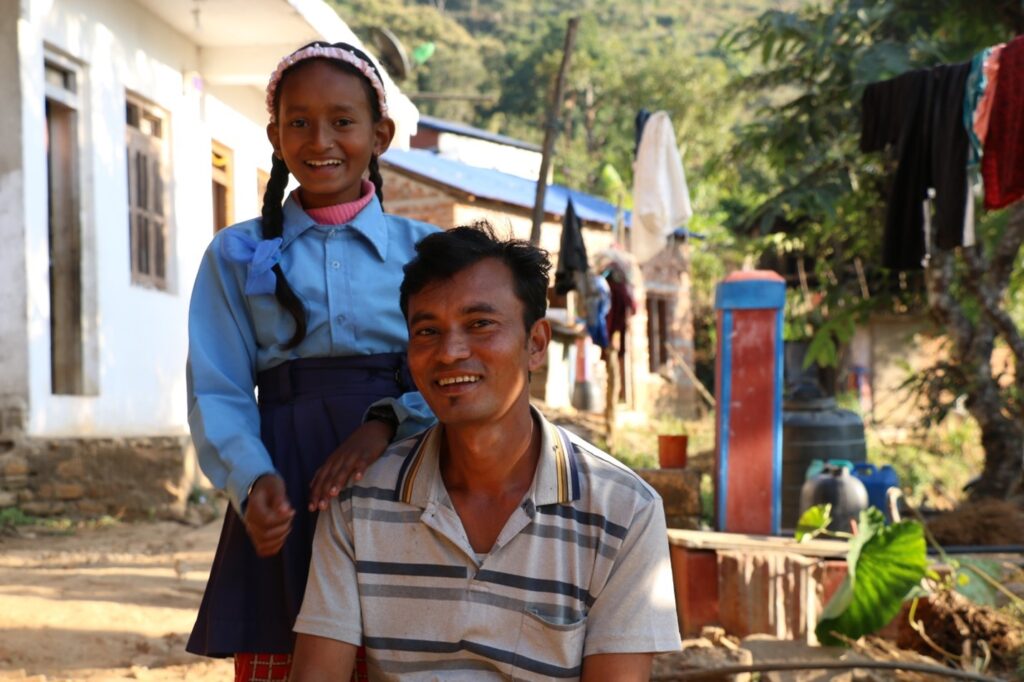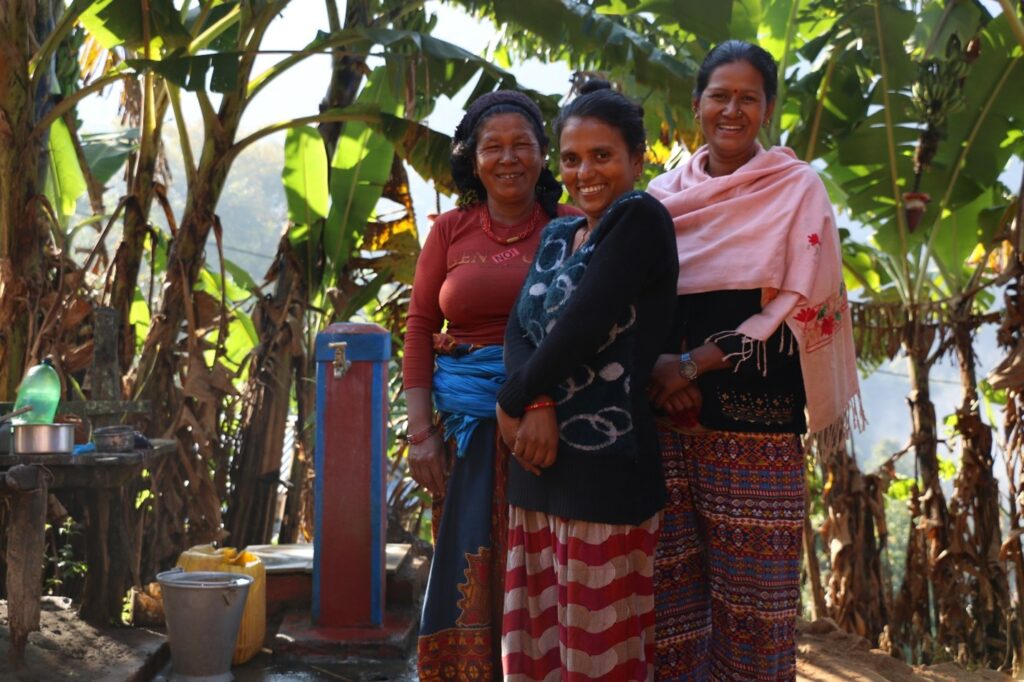When there isn’t enough water or the water source is very far, a woman’s quality of life takes a direct hit. She must first think about how to contrive water for the day when she wakes up. She is responsible for cooking the food, feeding the kids, and getting them ready for school. It is her job to get fodder for the animals and work in the fields as well.
Also, we can’t forget washing clothes, cleaning the house, bathing, and a plethora of other small activities that fall on women’s shoulders as well. She often wakes up before dawn to ensure she can bring enough water home and still have daylight left for the rest of the chores.
The time it takes to get the water home and how much water gets home will dictate how quickly she must rush through everything else. Thus, the anxious attachment to water.
Water, Gender, and the Power of a Household Tap
So, what has a household tap got to do with these Nepalese women’s anxious attachment to water? Women from different villages in Benighat, Rorang, and Jwalamukhi Rural Municipality share their experiences on how a household tap has affected their relationship with water.
Binda Magararthi’s story from Grundfos Foundation | PDJF on Vimeo.
Water has always had a gender: female, worldwide, throughout human history. However, While the developed world has somewhat ungendered water, with sufficient piped water connections, a significant part of the developing world still puts its burden of managing water (and other WASH activities) on its women’s backs.
This unfair distribution of water (and WASH)-related work becomes an overbearing burden for women when water resources are too far, inadequate, and unsafe. Women living in villages without access to managed piped water connections usually walk hours through difficult terrain to fetch water.
In the Jwalamukhi and Benighat Rorang Rural municipalities of Dhading District in Nepal, it is still mostly women who are responsible for the management of water for household use. Binda Magararthi (photo above), from Benighat Roral Rural municipality, is a ward member (smallest unit of Local government in Nepal), a mother, a wife, and a dynamic personality. Binda is married to Krishna Surkheti, who is a teacher, and their two children who go to school around the same time she goes to the ward office and her husband leaves for school. So, her husband cooks the food and takes the children to school.
Krishna Surkheti’s story from Grundfos Foundation | PDJF on Vimeo.
They also keep animals: buffaloes, and goats. The animals need to be fed. So, Binda wakes up in the morning and collects the grass. The children need to be fed as well. Before they had a household tap in their yard, Binda had to carry water first thing in the morning. Cooking for the kids and feeding the animals, both tasks require the use of water.
Household tap = Quality of Life
A household tap represents easy access to water. Easy access to water is directly linked with a better quality of life for women. There’s a water supply system that makes the household tap functional. So, it is integral that this water supply system remains functional and sustainable. A recent report from Nepal’s Department of Water Supply and Sanitation Management (2020) states that only 28.13% of water supply schemes are fully functional and the remaining 72% need repairs and maintenance. The dysfunctionality of water supply schemes is a major contributing factor in most women, girls, and children still needing to walk for hours to fetch water.
Household taps change lives from Grundfos Foundation | PDJF on Vimeo.
Many villages where women are making long journeys on foot to get water have had a water supply system at some point. However, these systems weren’t established with sustainability in mind. Most of these systems broke down sooner than later, forcing women to load their Dokos ( Bamboo baskets made more carrying load) with empty pitchers and get back to carrying water on their backs.
Therefore, Oxfam, with the support of Grundfos Foundation, are focusing on the sustainability of these water supply schemes under the Alternative Management Model (AMM) project. AMM project is currently working on the repair and maintenance of dysfunctional water supply schemes and bringing them together under a Water Supply Management board that is endorsed by the government in certain areas of Dhading, Sarlahi, and Rautahat in Nepal.




